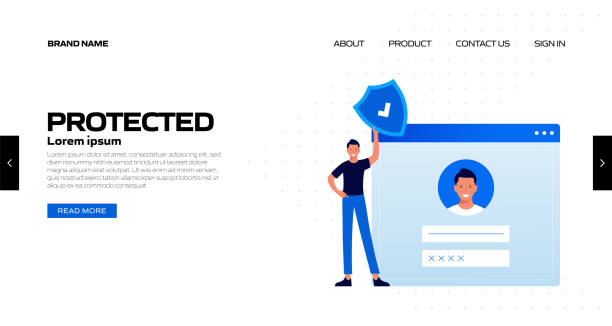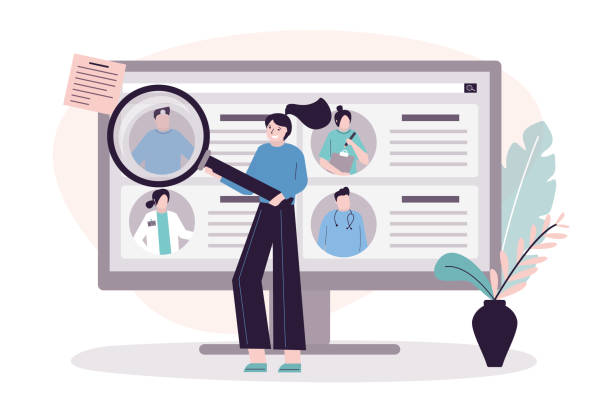The Importance of Multilingual Website Design in Today’s World

In the age of globalization, having a website is merely the first step.
To reach a wider audience and cross geographical borders, the need for #multilingual_website_design is more pressing than ever.
This approach allows businesses to convey their message in various languages and connect with diverse cultures.
The benefits are not limited to increased accessibility; they significantly contribute to improving user experience, enhancing brand credibility, and ultimately, boosting sales and market development.
A multilingual website is essentially a bridge between you and billions of potential users worldwide who search for information in their native languages.
This is crucial not only for large corporations but also for small and medium-sized businesses, as e-commerce knows no borders and competition within it is fierce.
To succeed in international markets, this important strategy cannot be overlooked.
Attention to cultural and linguistic details is paramount in this process; simply translating words is not enough. Content must be localized to establish a deeper connection with the target audience.
This section provides a comprehensive explanation of why this topic is important and familiarizes you with its various dimensions.
Did you know that your company’s website is the first point of contact for 75% of potential customers?
Your website is the face of your brand. With **Rasawweb** corporate website design services, build an online presence that earns customer trust.
✅ Create a professional and lasting image for your brand
✅ Attract target customers and enhance online credibility
⚡ Get a free consultation from **Rasawweb** experts!
Analysis of International Benefits and Opportunities

A detailed market analysis reveals that designing a multilingual website can provide unparalleled opportunities for businesses. By expanding operations into new markets, the potential for revenue growth significantly increases.
Imagine your website being able to speak to customers in China, Germany, or Brazil in their own language; this not only boosts traffic but also dramatically improves conversion rates.
#Internationalization and localization go beyond mere text translation; they include adapting currency, date formats, images, and even the tone of content to the target culture.
This analytical approach helps us understand how investing in multilingual websites can yield a satisfactory return on investment.
Furthermore, multilingual websites solidify your brand’s position as a global entity and lend it credibility.
This strategy distinguishes you from competitors who have settled for only the domestic market, ensuring your leadership in the global arena.
Access to analytical data related to international users also helps you optimize your marketing strategies and make data-driven decisions.
This section analytically examines these benefits and opportunities.
Technical Challenges in Multilingual Website Design and Solutions
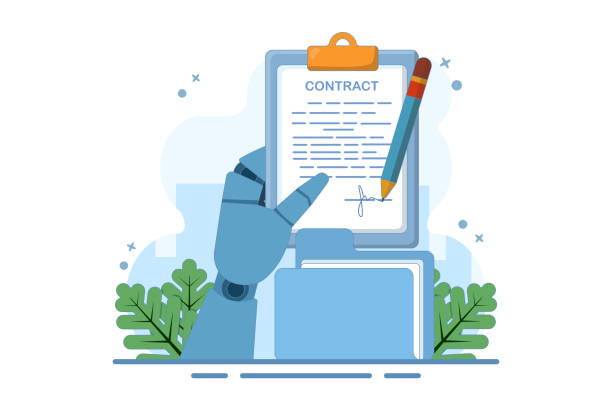
Implementing a successful multilingual website design requires attention to technical details and addressing related challenges.
One of the most important challenges is the URL structure.
Should subdomains (e.g., en.example.com), subdirectories (example.com/en/), or top-level domains (example.co.uk) be used? Each has its advantages and disadvantages, and the decision should be made based on SEO goals and the overall site structure.
Another important challenge is the correct use of hreflang tags, which help search engines display the appropriate language version of a page to users.
These tags are crucial for preventing duplicate content issues and improving SEO rankings. Content management across different languages is also highly important; your Content Management System (CMS) must be able to support multiple content versions and facilitate the translation and update process.
#Technical_challenges and their solutions for creating an efficient multilingual portal are considered specialized topics in this field.
Choosing suitable hosting that can support international traffic and high speed is also a key factor.
Furthermore, attention must be paid to character encoding issues (such as UTF-8) to ensure the correct display of characters in different languages and prevent display problems.
Comparison of URL Structures for Multilingual Websites
| Structure Type | Advantages | Disadvantages | URL Example |
|---|---|---|---|
| Subdirectory | Easier management, better SEO for the main domain | Requires a stronger server, may be difficult for geographical differentiation | example.com/en/ |
| Subdomain | Clearer geographical separation, easy separate hosting | More complexity in SEO management, less main domain authority | en.example.com |
| Top-Level Domain (ccTLD) | Best local SEO, higher user trust | Higher cost, more complex management, need to purchase multiple domains | example.co.uk |
Guide to Choosing a Content Management System (CMS) for Multilingual Capability

Choosing the right Content Management System (CMS) is one of the key decisions in the #multilingual_website_design_process.
A powerful CMS should offer comprehensive built-in capabilities or plugins for managing different languages.
WordPress with plugins like WPML or Polylang, Drupal with its native multilingual features, and Joomla are also popular choices.
Each of these platforms has its own advantages and disadvantages, and the final choice should be made based on your team’s needs, budget, and expertise.
Some critical features of a suitable CMS include easy content translation, multilingual URL management, support for hreflang tags, and the ability for users to quickly switch between languages. Additionally, you must ensure that your chosen CMS fully supports Right-to-Left (RTL) languages like Persian or Arabic.
This section is designed as a comprehensive guide for selecting the best tools on the path to building an international website.
It is recommended to review various demos and consult with your development team before making any decision to ensure full compatibility of the platform with your project’s needs.
Did you know that 94% of a first impression of a company is related to its website design?
Rasawweb, by offering professional corporate website design services, helps you create the best first impression.
✅ Fully custom design tailored to your brand identity
✅ Increased lead generation and enhanced business credibility in the eyes of customers⚡ Contact us for a free consultation!
User Experience (UX) and User Interface (UI) in Multilingual Websites

Simply translating content is not enough to create an effective multilingual website design; User Experience (UX) and User Interface (UI) play a crucial role in its success.
Users should be able to easily find and select their desired language.
The language switcher should be placed in a prominent and accessible location, typically in the website’s header or footer.
#Localized_design means going beyond word-for-word translation; it includes adapting visual design, layout, and even colors to the cultural preferences of the target audience.
For example, colors have different meanings in various cultures and must be chosen carefully.
Fonts must also be optimized for different languages to maintain readability and aesthetics.
The ultimate goal is to create an experience where the user feels the website was designed from the outset for them, their language, and their culture. This section addresses the engaging (meaning captivating and appealing) and important aspects of UX/UI that can make a significant difference in the level of interaction and loyalty of international users.
Examining successful multilingual websites can serve as good inspiration for implementing these principles.
The Importance of Content Strategy and Cultural Localization

One of the most critical aspects of multilingual website design is developing a comprehensive content strategy and paying attention to cultural localization.
Localization goes beyond simple text translation; it means adapting content to the language, culture, customs, and even the humor of the target audience.
Content that is successful in one culture might be completely ineffective or even offensive in another.
For example, slang, cultural references, and even images must be chosen carefully. Does your content answer potential user questions in different markets? Does your tone and writing style align with their cultural expectations? These and many other questions must be considered during the content localization process.
#Multilingual_content_strategy should include systematic processes for translating, editing, and reviewing content by native translators who are fully familiar with the target culture.
This approach ensures that your website is accepted not only linguistically but also culturally.
This section explores thought-provoking content in the field of localization and clarifies its importance.
Latest Developments and SEO Tools for International Websites
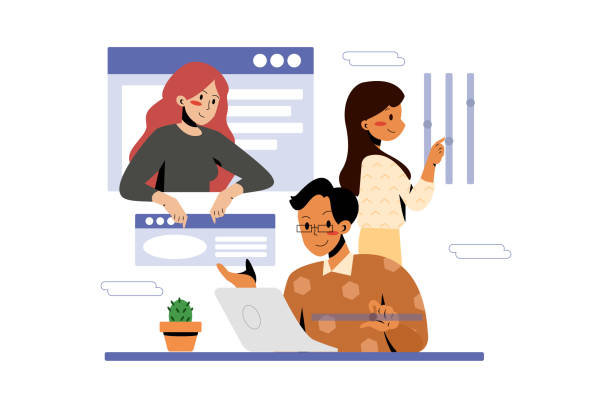
Successful multilingual website design is incomplete without a strong SEO strategy for international markets. The latest developments in SEO indicate that search engines like Google place special importance on hreflang tags to deliver the correct content to users in the appropriate language and geographical region.
Furthermore, site loading speed, mobile compatibility, and content quality remain key ranking factors that must be carefully considered for multilingual websites as well.
Using international keyword research tools such as Google Keyword Planner, SEMrush, and Ahrefs is essential for identifying frequently used keywords in each language.
Additionally, local content marketing strategies and link building in each target market should be considered.
#International_SEO is a dynamic field that requires continuous monitoring and updating.
This section provides a news-like overview of the latest approaches and tools essential for improving the visibility of your multilingual website in search engines.
SEO Checklist for Multilingual Websites
| Item | Description | Status |
|---|---|---|
| Hreflang tag implementation | Correct tags for each language and geographical region | ✓ |
| Appropriate URL structure | Subdirectory, subdomain, or ccTLD based on needs | ✓ |
| Local keyword research | Identifying suitable keywords for each language/region | ✓ |
| Localized content | Translation and cultural localization of content | ✓ |
| Loading speed and mobile compatibility | Optimization for speed and mobile devices | ✓ |
Educational Tips for Development Team and Translators
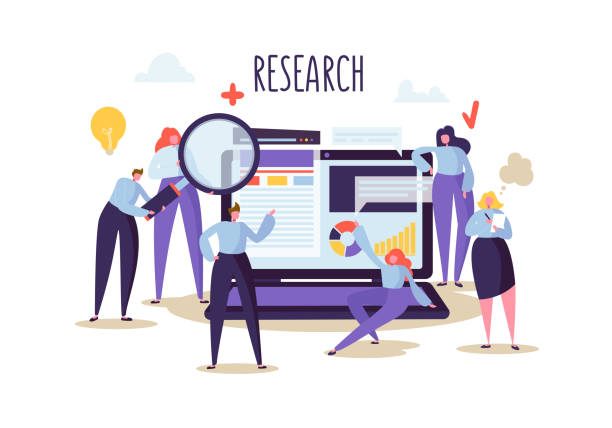
Developing a successful multilingual site is not limited to coding and tool selection; it requires comprehensive training and coordination between the development team and translators. The development team must be familiar with best practices for internationalization (I18n) and localization (L10n) and ensure that the website infrastructure can support various languages.
This includes ensuring the correct use of character encoding (such as UTF-8), designing a database capable of storing multilingual texts, and developing easily translatable templates.
On the other hand, translators must go beyond mere word translation and be familiar with the concept of cultural localization.
#Multilingual_training helps them not only maintain linguistic accuracy but also incorporate appropriate tone, style, and cultural references into the translated content.
Holding joint workshops and creating a style guide for each language can help maintain content consistency and quality across the entire website.
This educational section addresses the importance of collaboration and shared knowledge in the multilingual site implementation process.
Did you know that 94% of a first impression of a company is related to its website design?
Rasawweb, by offering professional corporate website design services, helps you create the best first impression.
✅ Fully custom design tailored to your brand identity
✅ Easier attraction of potential customers and improvement of online standing⚡ Get a free corporate website design consultation
Comparison of Multilingual Website Design Platforms

Choosing the right platform for multilingual website design is a key decision that affects website performance, ease of management, and scalability.
Various platforms with multilingual capabilities are available, each with its own strengths and weaknesses.
For example, WordPress, with powerful plugins like WPML or Polylang, allows for creating multilingual websites with high flexibility.
These plugins enable the translation of posts, pages, categories, and even theme strings.
Drupal, with its strong native multilingual capabilities and complex content management, is also a popular choice for larger projects.
Joomla, with its native language support, is also a respectable choice.
E-commerce platforms like Shopify or Magento also offer solutions for creating multilingual online stores, which are essential for international businesses.
A suitable #multilingual_platform should technically support features such as UTF-8, hreflang tags, and multilingual URL routing.
This section provides a specialized comparison of these platforms, enabling you to choose the best option for your specific multilingual website design needs and become aware of its various dimensions.
The Future of Multilingual Websites and New Trends

The future of multilingual website design will undergo significant transformations with the emergence of new technologies and changes in user consumption patterns.
Artificial Intelligence (AI) and Machine Learning (ML) will play an increasing role in machine translation and content localization.
Tools capable of automatically optimizing content or even providing high-quality initial translation drafts are under development.
Furthermore, the importance of voice search and smart assistants in various languages is growing, requiring content optimization to respond to these types of searches in native languages.
#New_multilingual_trends include a greater focus on personalized user experience and dynamic content that changes based on language, geographical location, and even user preferences.
Multilingual websites will not merely be limited to text translation but will evolve into platforms capable of delivering fully localized and customized experiences for every user anywhere in the world.
This section provides an explanatory overview of the future outlook and the latest advancements in multilingual websites, offering strategies to keep pace with these changes.
Frequently Asked Questions
| Question | Answer |
|---|---|
| What is a multilingual website? | It is a website whose content is available to users in multiple different languages. |
| Why should we design a multilingual website? | To expand reach to international audiences, increase website traffic, improve SEO in target markets, and provide a better user experience for non-Persian speaking users. |
| What are the main methods for implementing a multilingual site? | Using subdomains (e.g., en.mysite.com), using subdirectories (e.g., mysite.com/en/), and using separate domains for each language (e.g., mysite.com and mysite.de). |
| Which implementation method is better for SEO? | Generally, using subdirectories (language folders) is often recommended due to the transfer of main domain authority to other languages. |
| What is the Hreflang tag and what is its use? | It is an HTML tag or HTTP Header that informs search engines which version of a page is suitable for which language or geographical region. This tag prevents Duplicate Content and improves SEO. |
| How is a Language Switcher designed? | Typically by using a dropdown menu, button, or flag in the website’s header or footer, which allows the user to select their preferred language. |
| Is automatic (machine) translation suitable for a multilingual site? | No, machine translation usually has low quality and many errors that can harm the site’s credibility. Human translation or a combination of human translation and machine editing is recommended. |
| What are the most important SEO tips in multilingual website design? | Correct use of Hreflang tags, having an appropriate URL structure for each language, translating titles and meta descriptions, translating main content, and internal linking between related language versions. |
| Should all website content be translated? | It depends on the strategy. Usually, the main and important content of the site should be translated. Less important sections or blogs may not require full translation. |
| What are the main challenges in multilingual website design? | Content management in different languages, translation costs, technical issues related to URLs and language tags, theme compatibility with Right-to-Left (RTL) languages like Persian and Arabic, and multilingual SEO management. |
And other services of Rasa Web Advertising Agency in the field of advertising
Smart Marketplace: A professional solution for digital branding with a focus on intelligent data analysis.
Smart Sales Automation: An effective tool for online growth by customizing user experience.
Smart Conversion Rate Optimization: A new service for increasing online growth through SEO-driven content strategy.
Smart Custom Software: A combination of creativity and technology for campaign management through attractive UI design.
Smart SEO: A dedicated service for growth through customer behavior analysis based on Google Ads management.
And over hundreds of other services in internet advertising, advertising consultation, and organizational solutions
Internet Advertising | Advertising Strategy | Advertorials
Resources
- Comprehensive Guide to Multilingual Website Design for Iranian Businesses
- Multilingual SEO Tips and Solutions for Increasing Global Traffic
- Why is Having a Multilingual Website Essential for Your Business?
- Introducing the Best Tools and Platforms for Building Multilingual Websites
? For a powerful online presence and visibility for your business, Rasawweb Afarin is by your side, offering comprehensive digital marketing services, including professional WordPress website design.
📍 Tehran, Mirdamad Street, next to Bank Markazi, Kazeroun Jonoubi Alley, Ramin Alley, No. 6

